This rare collection provides a glimpse into the Titanic's world before and after its tragic sinking, reminding us of the human cost of the disaster and prompting reflection on the many "what ifs" that could have altered history. The winter of 1911-1912 was unusually mild, leading to a surge of icebergs drifting toward Greenland's west coast. Had this not occurred, the Titanic may never have gone down.
What if the ship was moving slower, the binoculars were not lost, or there had been enough lifeboats? This captivating and heartbreaking visual story takes us on a journey to explore these questions and more about this disaster that shook the world.
The Titanic's Belfast Heritage
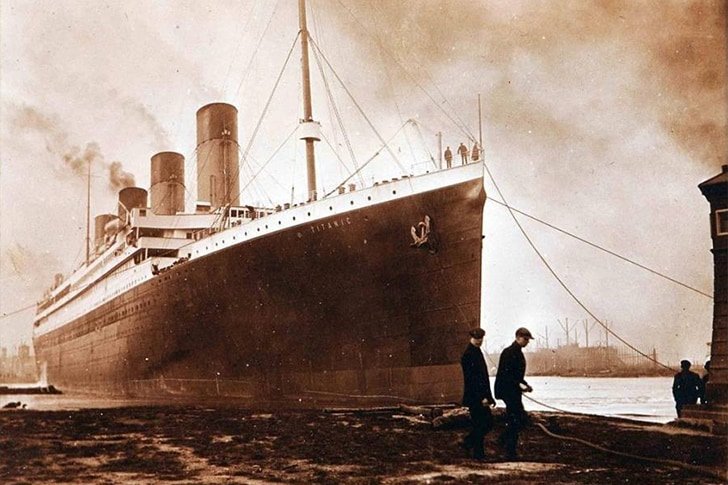
This photo captures the fabled and ill-fated RMS Titanic before it began its maiden voyage to New York. Around April 1912, it was stationed close to the dock in Belfast, Northern Ireland. And it may come as a surprise, but this was the city where it was constructed, with every detail of its creation managed from the port area of this Irish metropolis.
A century after the incident, an interactive museum focused on the heritage and chronicles of the ship, inducing its discovery in the '80s, was inaugurated. Its location is what is now called the Titanic Quarter at Belfast Docks.
Titanic Lifeboats in Davits Prior to Departure
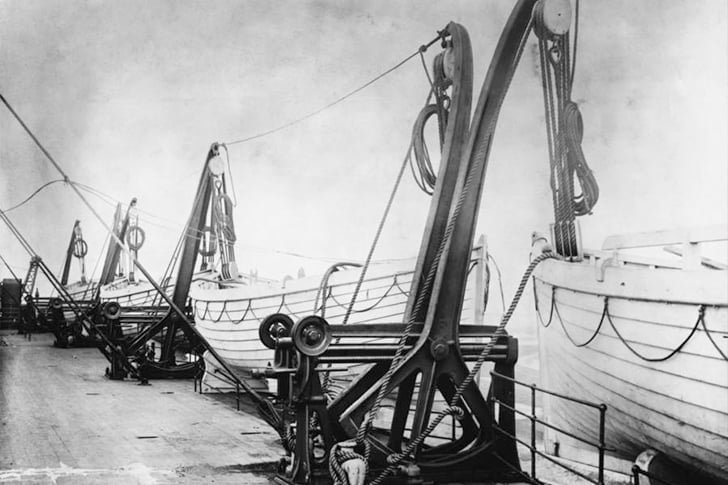
The contraptions here are lifeboats positioned in their davits on the Titanic just before the ship's departure. A davit is a type of small crane on a ship, commonly used in pairs to raise or lower the life vessels. These came in handy when the historical tragedy occurred.
The protocol during the Titanic disaster prioritized women and children for lifeboat allocation. As a result, 72% of women, 50% of children, and only 16% of men survived. Interestingly, private papers of the Titanic's safety supervisor reveal he asked for 50% more lifeboats, but the White Star Line forced him to back down.
The Icy Waters That Doomed the Titanic
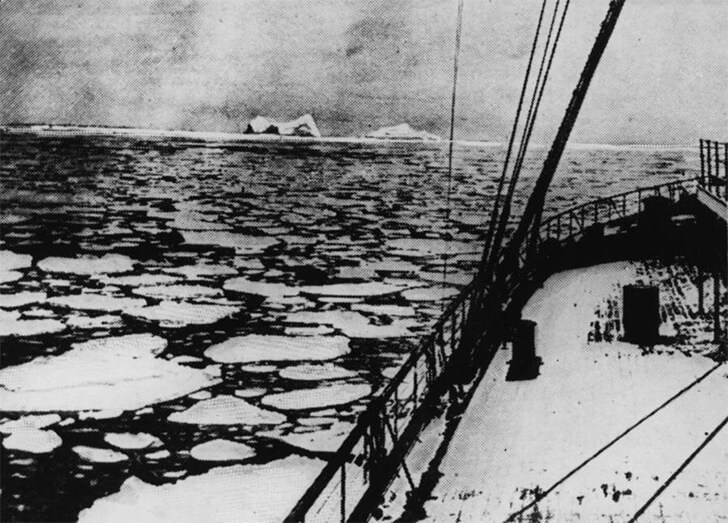
The frigid waters where the Titanic sank are displayed here as it was captured on camera a few days before the tragic event. A mild winter led to a massive shift of icebergs off the west coast of Greenland, which was responsible for the icy conditions. The temperature of the water when the Titanic sank was 28°F.
These freezing conditions played a significant role in the high number of fatalities, as many who jumped into the water may have succumbed to hypothermia within minutes and eventually drowned. However, it's possible that some passengers perished due to their inability to swim.
Titanic Sea Trials
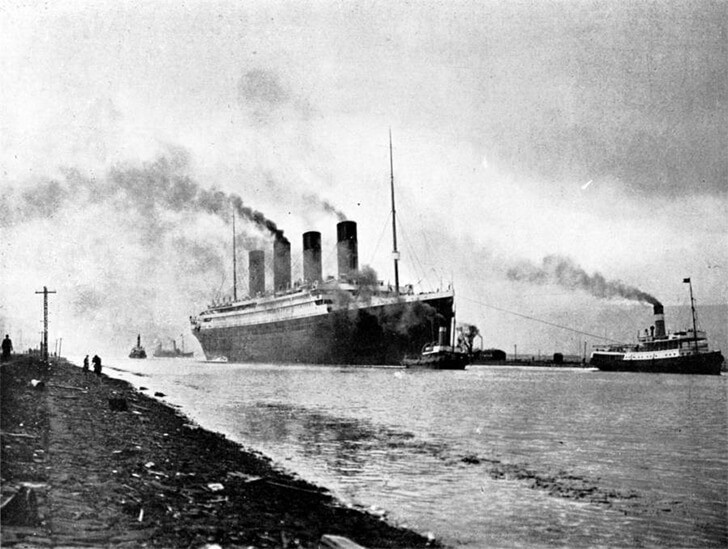
On Tuesday, April 2, 1912, at 6 am, the Titanic initiated its sea trials, two days after completing its fitting-out and eight days ahead of its inaugural journey from Southampton. Adverse weather conditions postponed the trials by one day, but following the successful completion of the tests, the ship was deemed fit for sailing.
During the sea trials, the Titanic underwent a series of evaluations of its maneuverability, conducted initially in Belfast Lough and later in the open waters of the Irish Sea. Several business representatives were present, including Thomas Andrews, Edward Wilding from Harland and Wolff, and Harold A. Sanderson from IMM.
The First-Class Reading and Writing Room
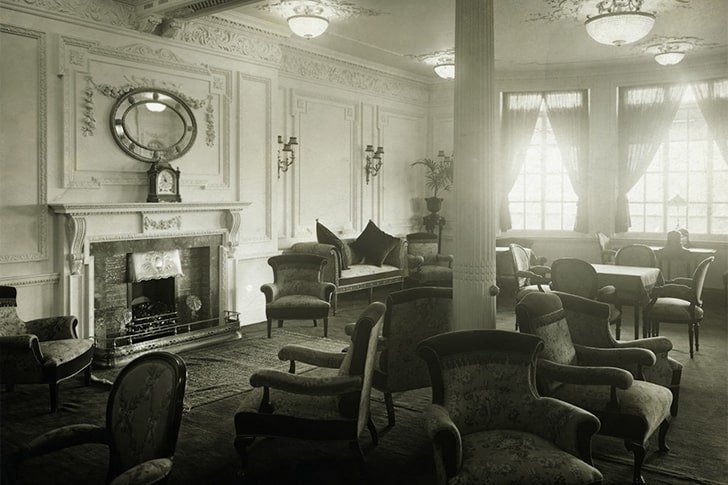
RMS Titanic's Reading and Writing Room on A deck was designed as a luxurious haven for first-class ladies to unwind. The room featured sizable windows adorned with pink drapes, offering breathtaking views of the vast ocean. This is it, captured on camera just before the ship's departure.
Due to its location near the point where the Titanic broke apart, the sloping decks impacted the Reading and Writing Room. Although the alcove remained forward of the bend, the roof over it had completely rusted away by 2012. The room and its fireplace sustained extensive damage as the deck below and above collapsed during the shipwreck.
Crowds Gather at Southampton Dock as Titanic Prepares for Voyage
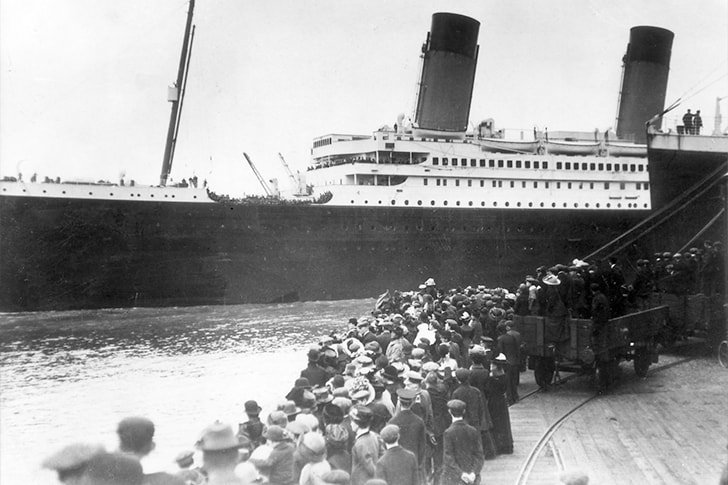
After remaining in Southampton for a week, the Titanic welcomed passengers and crew aboard on April 10, 1912, before setting out to sea at noon. As is evident from this picture, the docks were crowded as the ship prepared to embark on its voyage. About 920 people boarded here, with more than half being third-class passengers.
Out of the 908 crew members onboard, 724 were from Southampton. Sadly, 549 of them died when the ship sank. The port city now has a walking trail highlighting places of importance to Titanic and several memorials in remembrance of its residents who died in the disaster.
Titanic's First-Class Lounge

The amenities on the Titanic exceeded those of competing ships during that era. Its first-class lounge was a lavish public room designed in the Louis XV style after the Palace of Versailles. Located mid-ship on A-deck, it boasted ornate decorations and offered stunning views of the promenade deck and the ocean beyond.
Following the collision with an iceberg that ultimately doomed the vessel, many passengers sought refuge from the frigid temperatures by gathering in the first-class lounge. As they waited for instructions from the crew, the Titanic's orchestra reportedly began playing in the lounge around 12:15 a.m., according to witness testimonies.
The Southampton Dock: A Gateway to the World.
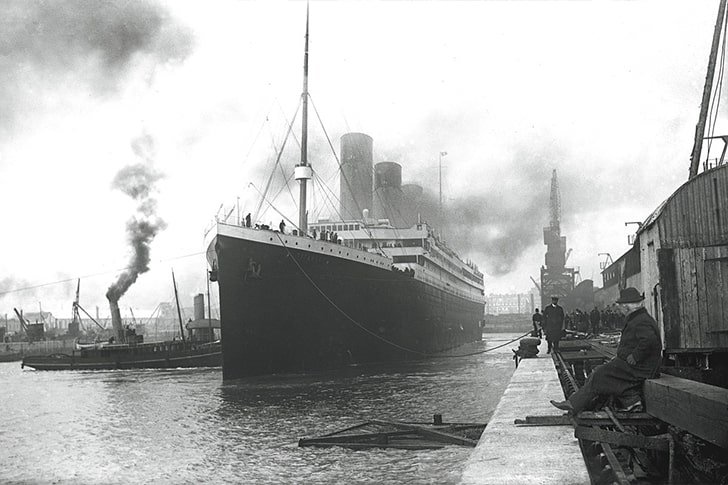
We see the Titanic docked at Southampton, England, shortly before its departure. Although the vessel was built in Belfast, it first picked up passengers from Southampton. Even the ship's captain Edward John Smith arrived early in the morning of departure from his home in that city while his officers had spent the night on board.
Southampton is strategically situated on the southern coast, with easy access to major shipping routes connecting the UK to markets worldwide. Even today, It serves as Britain's primary gateway to the world and is the country's top export port, playing a critical role in facilitating international trade.
The Voyage Begins
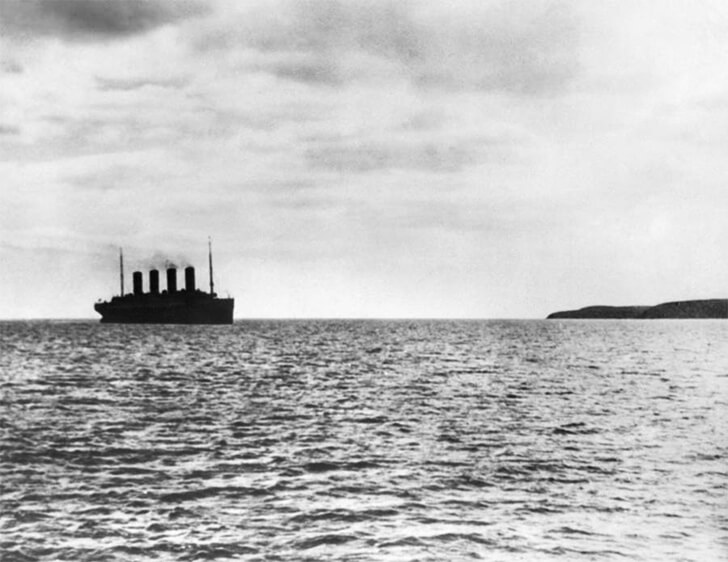
This historical picture marks the beginning of the ship's voyage, believed to be unsinkable. As the Titanic departed from Southampton, an estimated 1,846 people were on board. During its departure, the massive amount of water it displaced almost led to a collision with the SS New York, which had broken free from its moorings and swung toward the Titanic.
However, a nearby tug quickly intervened and pulled the SS New York out of harm's way, allowing the Titanic to continue its maiden journey with only a minor delay. It eventually arrived at its first destination in Cherbourg to pick up passengers, crew, and supplies.
Passengers Walk by Onboard Lifeboats Prior to Sinking
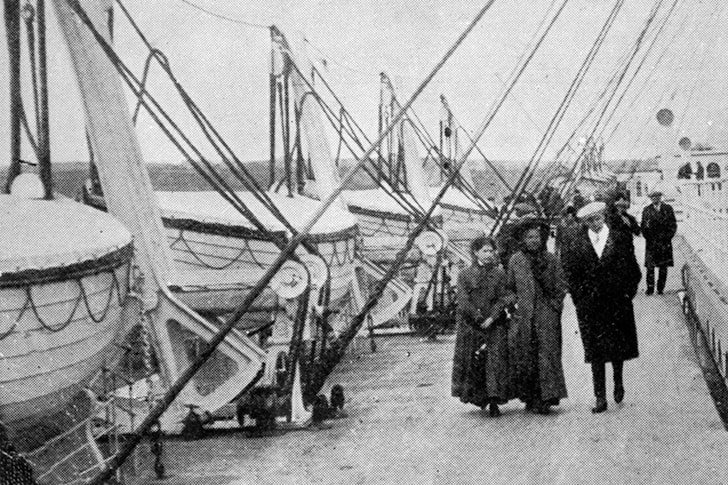
There was no way for any of the passengers aboard the Titanic to know the fate that would befall the ship. As they strolled through this area with the onboard lifeboats, they probably never imagined they would have to use them. Although a lifeboat drill was supposed to be conducted the morning before the vessel sank, Capt. Edward J. Smith canceled it.
Unfortunately, Titanic's lifeboats were only enough to hold around one-third of the ship's total capacity. And even then, many were only partially filled at about half of their maximum capacity, primarily because of fear of overloading that could cause them to buckle under the weight.
Playground on the Titanic
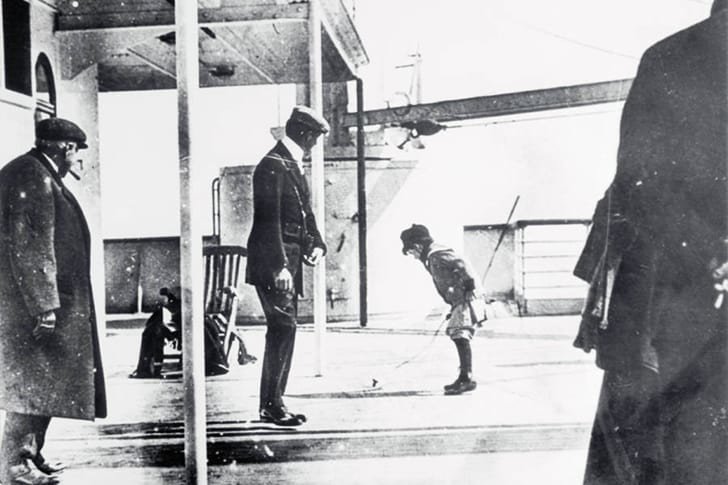
A child was seen playing on the playground situated on the saloon deck of the Titanic just three days before the ship's sinking. Rev. E.M. Brown took a photograph during the brief journey from Southampton to Queenstown, England, before disembarking at the latter location.
The knowledge that only 50 out of 107 children onboard would survive is particularly haunting. Nevertheless, for a brief moment, the Titanic provided a place to escape their troubles and enjoy the luxuries of the time. Measuring as long as three football fields and featuring nine decks, the ship had numerous places for first and second-class children to explore and play games.
The Café Parisien
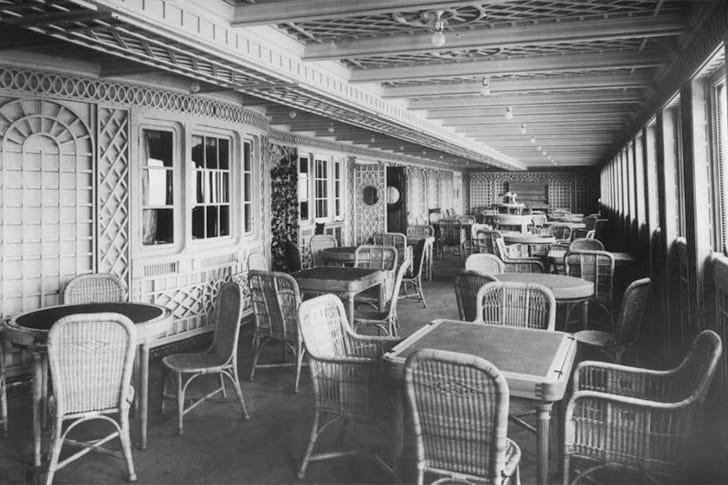
The RMS Titanic boasted a novel addition—a Parisian-style café named Café Parisien. Positioned on the starboard side of A deck, the café was connected to the À la Carte Restaurant. Its design resembled a Parisian sidewalk café, complete with white paint, trellises adorned with live English Ivy, and a lengthy green carpet that stretched the entire room.
Like the restaurant, the Café Parisien operated from 8 a.m. to 11 p.m., sharing the same menu and servers. On the night of the iceberg collision, the menu included oysters, salmon, roast duckling, sirloin of beef, pate de foie gras, peaches in Chartreuse jelly, and chocolate and vanilla éclairs.
Captain Smith and Purser McElroy Aboard the Titanic

One day into its voyage between Southampton and Queenstown, Captain Edward J. Smith and purser Hugh Walter McElroy were photographed here standing aboard the Titanic. Pursers are responsible for managing the finances of a ship. During the sinking, they acted diligently to remove many valuable items from the safe.
As the Chief Purser, McElroy was one of the first crew members contacted by Captain Smith after the Titanic collided with the iceberg. Tragically, both lost their lives in the disaster. Despite having done everything in his power to ensure the safety of the passengers and crew, Captain Smith remained at his post until the very end.
The Titanic's Main Dining Room Prior to Departure

The food served aboard the Titanic was designed to reflect the ultimate luxury of the liner itself. The Dining Saloon, situated on D deck, boasted an immense size. Spanning the entire width of the ship and measuring 114 feet in length, it could accommodate more than 500 passengers.
As the room was located near the boiler casing for two boiler rooms on the Titanic, it was catastrophically damaged when the ship split in two on that fateful day. Upon striking the seafloor, the area underwent severe structural collapse, leaving only faint remnants observed in James Cameron's "Ghosts of the Abyss" documentary in 2001.
The Infamous Iceberg Believed to Have Sunk the Titanic.

This is the iceberg believed to have sunk the Titanic. It was captured in a photograph taken by a steward on a passing ship the morning after the disaster. Although the ship had not yet been informed of the tragedy, the steward observed red paint on the base of the iceberg, suggesting a vessel had collided with it within the previous few hours.
Despite their small size, icebergs can weigh anywhere from 120 to 5,400 tons, posing a risk to ships. Icebergs today are more numerous than during the Titanic era due to global warming. While technological advances and ship design have reduced their threat, they're still dangerous.
A Long-standing Danger at Sea

Icebergs colliding with ships have been a long-standing danger throughout maritime history. Captured in a photograph after the tragedy, this iceberg was discovered near the spot where the Titanic sank. It was central to a legal case aimed at reducing Oceanic Steam Navigation Company Ltd's liability for the catastrophe's damage to life and property.
Icebergs in the North Atlantic have an average lifespan of two to three years, from initial formation to eventual melting. The iceberg that caused the Titanic disaster likely calved from Greenland in 1910 or 1911, and by the end of 1912 or sometime in 1913, it was most likely gone forever.
Lifeboats Carrying Titanic Survivors Toward Safety.
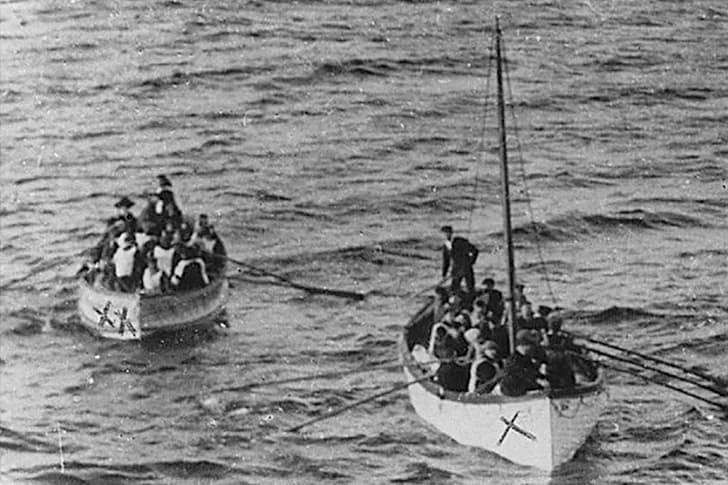 On April 15, 1912, this photo was taken of two lifeboats transporting survivors of the Titanic toward safety. Out of the 2,208 passengers and crew onboard the Titanic, 1,503 did not make it onto a lifeboat and perished in the North Atlantic Ocean. The remaining 705 people were able to escape on lifeboats and were rescued by the RMS Carpathia later that morning.
On April 15, 1912, this photo was taken of two lifeboats transporting survivors of the Titanic toward safety. Out of the 2,208 passengers and crew onboard the Titanic, 1,503 did not make it onto a lifeboat and perished in the North Atlantic Ocean. The remaining 705 people were able to escape on lifeboats and were rescued by the RMS Carpathia later that morning.
The RMS Carpathia arrived at the location of the lifeboats at 4 am, approximately one hour and forty minutes after the Titanic sank. The rescue operation continued until the final lifeboat was retrieved at 8:30 am.
The Famed Lifeboat 6
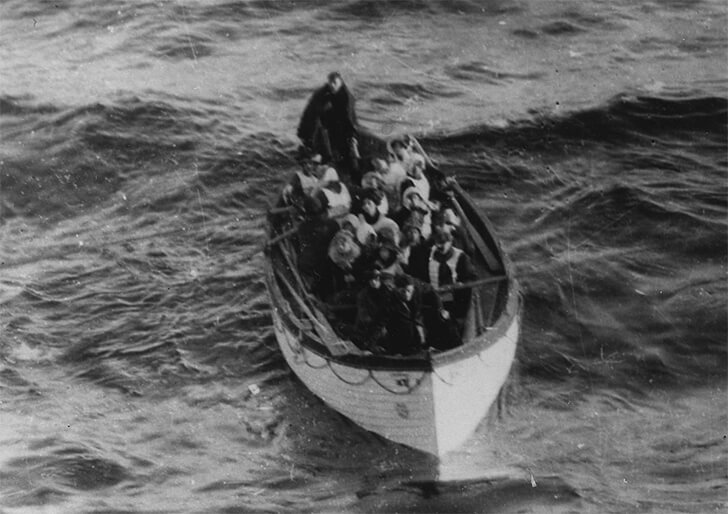
Of the 20 lifeboats the Titanic had, none became as famous as Lifeboat 6, pictured here. According to the launching sequence, it was one of the first to leave the ship, launched at 12:40 a.m., a few minutes before Lifeboat 3. And it is famous for rescuing Margaret “Molly” Brown.
Brown was an American socialite and philanthropist who became known as "The Unsinkable Molly Brown." During the disaster, she reportedly urged the crew to return to the debris field to search for survivors, but her pleas were unsuccessful. She was opposed by Robert Hichens, the crewman in charge of their lifeboat, whom she threatened to throw overboard.
Recovery of Titanic's Last Valuables
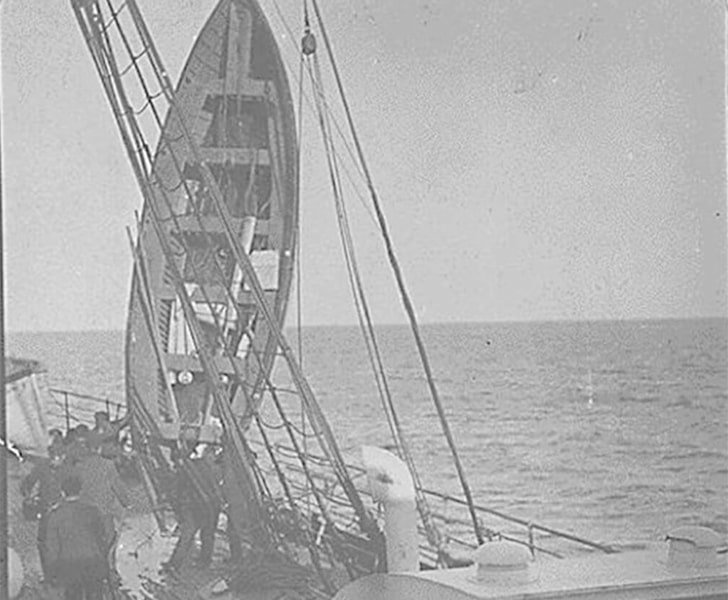
The Carpathia rescued the survivors of the disaster in a period of four hours and thirty minutes, during which time it also picked up 13 lifeboats. There was no space for the remaining five, so they were set adrift. This photo shows lifeboat number 12 being hoisted and drained of water after conveying about 70 people to safety. It was the final one to be rescued by the Carpathia.
These lifeboats were considered the only valuable things salvaged from the Titanic and were returned to the White Star Line at New York Harbor. However, over time, they disappeared from history.
Improving Maritime Safety Regulations
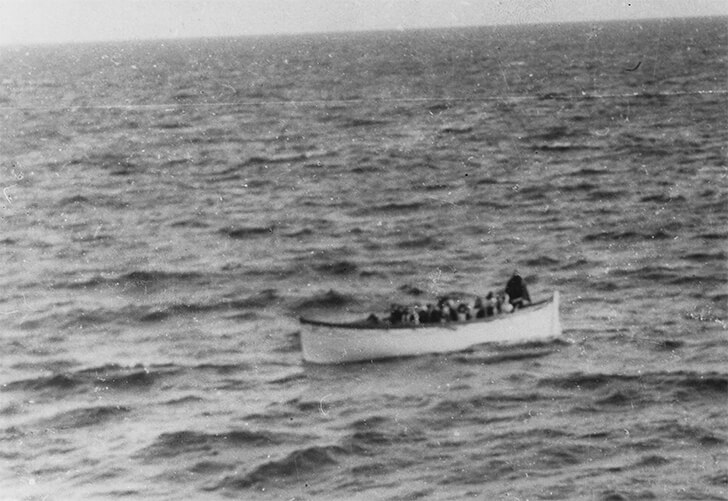
Following the Titanic disaster, various regulations and laws were enacted to prevent future maritime tragedies. These included improved safety procedures and construction for ships, the establishment of constant communication with other vessels and coastal radio stations, and the provision of fair compensation for maritime injuries. The British and American Boards of Inquiry decided that ships should carry enough lifeboats for everyone on the vessel.
Despite having an insufficient number of lifeboats for its number of passengers, the Titanic was actually in compliance with the maritime safety regulations of its time. However, the tragedy highlighted the inadequacy of these regulations for large passenger ships and led to improvements.
The Final Lifeboat Launched from the Titanic
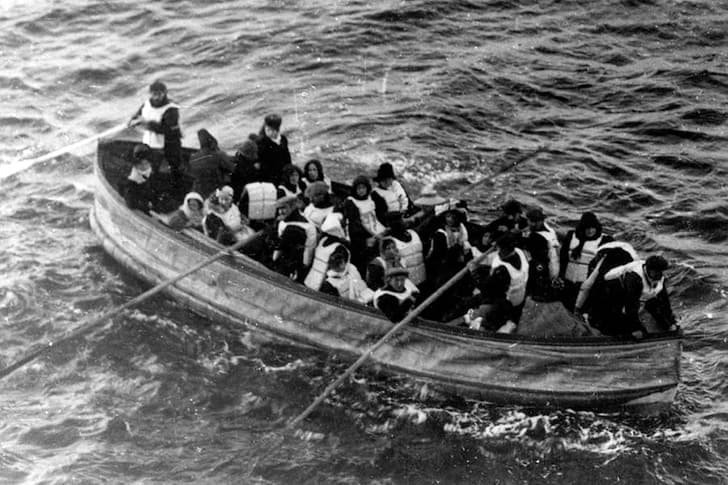
Titanic collapsible lifeboat D, pictured here with an estimated 31 passengers, was the ninth and final lifeboat to be lowered from the ship. At first, the boat was filled with about 20 people, but it eventually received more from boat 14 later in the ordeal. Initially only filled with women and children, two men jumped in from a lower deck.
One other man, Frederick Hoyt, accompanied his wife to the lifeboat and devised a plan to swim toward the direction it was rowing in hopes that they would rescue him. Remarkably, his plan worked, making him the only person the vessel picked up from the water.
Survivors Rescued by the Carpathia
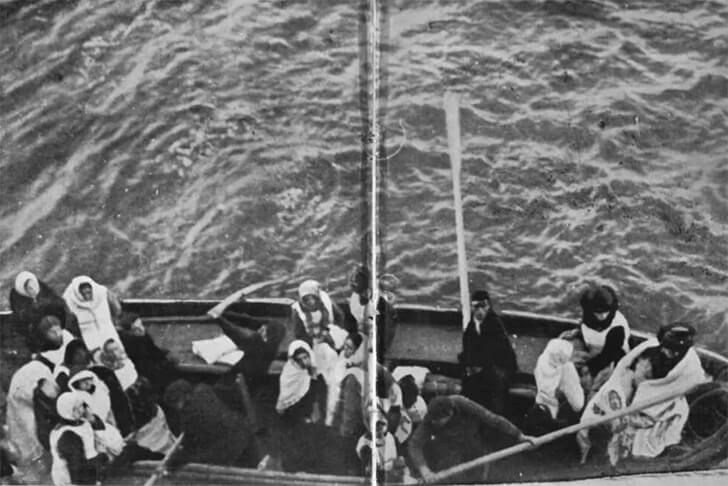
This photograph taken by J.W. Barker shows one of the boatloads of Titanic survivors picked up by the Carpathia, including women, babies, and seamen rowing with oars. On the night of April 14, 1912, the Carpathia was en route from New York City to Rijeka when wireless operator Harold Cottam burst into Captain Arthur Henry Rostron's cabin and informed him of Titanic's distress signal.
Captain Rostron immediately set course to the liner's last known position, more than 60 miles away. After navigating through treacherous ice fields, Carpathia arrived at the scene. Rostron was later honored with a U.S. Congressional Gold Medal for his heroic efforts.
The Heroic Carpathia Crew

Shortly after their rescue, survivors of the Titanic sinking were seated on the deck of the Carpathia, draped in blankets and clothing provided by the passengers of the rescue ship. While rushing to the tragedy site, Captain Rostron ensured his crew was ready to assist the survivors.
He had them prepare hot drinks and soup beforehand, hoping that survivors would need to be warmed up after being in the freezing water. Many who have experienced a shipwreck attest that the freezing cold does the most damage. The public rooms were also converted into dormitories, and doctors were put on standby, ready to attend to medical needs.
The French Navratil Brothers
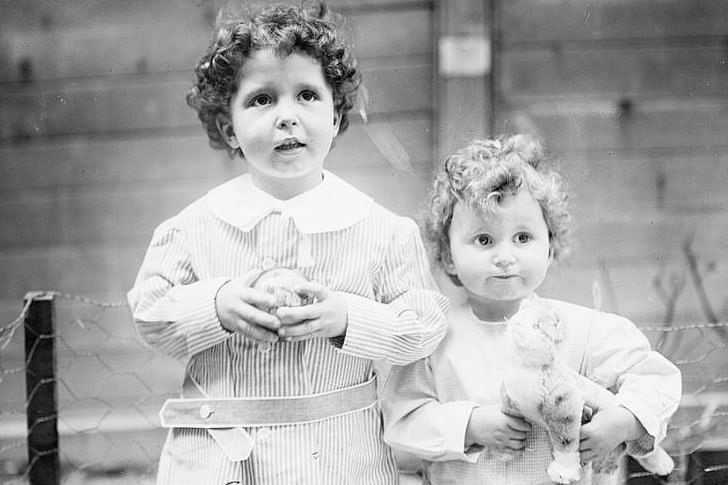
This photo shows the infamous Titanic orphans—four-year-old Michel and two-year-old Edmond Navratil. The two French brothers were left without a parent after their father died on the ill-fated ship. They survived on the last lifeboat to leave the ship and were taken to New York, where they stayed for a month before their mother came to claim them.
She had not boarded the Titanic and stayed in France but recognized them from a newspaper photo. The Navratil family eventually returned to France, where the brothers spent the rest of their lives. Michel became the oldest surviving male of the shipwreck while his brother passed away in 1953.
The Silent Agony of Survivors Aboard the Carpathia

The surviving passengers of the Titanic must have felt a huge relief when they climbed aboard the Carpathia. In this picture of them on the ship's deck, they all seem surprisingly calm despite the unimaginable horror they experienced and the loved ones they lost. During that time, it was often believed inappropriate to display emotions in the presence of strangers.
Still, emotions expressed or not, passengers aboard the Carpathia offered any assistance they could to the rescued survivors through warm food, accommodations, and words of comfort. Captain Rostron considered various options for where to disembark the survivors and ultimately decided on New York City, the original destination.
News Travels Faster Than Ships
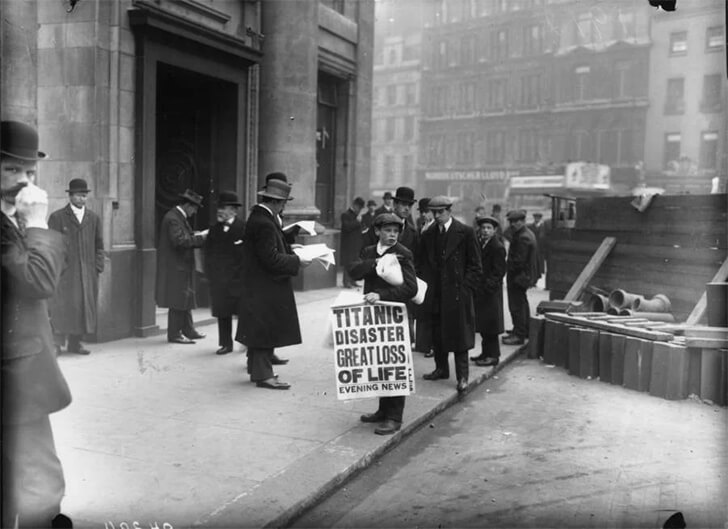
The image of a young newsboy holding a poster outside the White Star Line offices in London announcing the Titanic disaster a day after it happened is a poignant reminder of the tragedy. The newsboy, Ned Parfett, was born in 1896 and was one of four brothers from Waterloo, London.
Tragically, six and a half years after the photograph was taken, Parfett was killed in France serving with the British army at 22. He died just two weeks before the end of World War I. While he was picking up some clothes before going on leave, a shell landed on the Quartermaster's stores and took his life.
Emotional Crowd Outside White Star Line Office
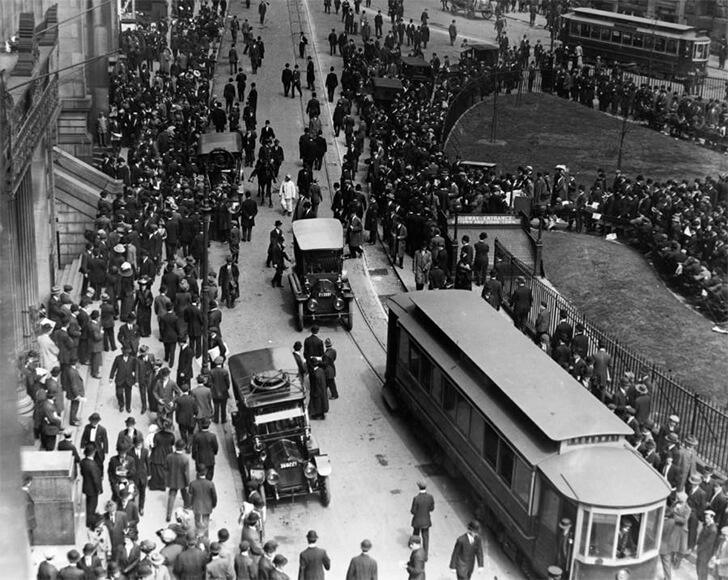
A large crowd of people, some visibly emotional, gathered inside and outside the White Star Line office, anxiously waiting for any updates on the disaster. The crowd was so thick that police struggled to maintain traffic flow through the area. They had to be gentle with the grief-stricken but quickly removed anyone there out of curiosity.
The office had rooms for each class of passengers, and clerks were providing information about survivors. If they confirmed a person was saved, the news was given quickly, but if there was no record, it was relayed gently, with the hope that there were still some survivors whose names were not yet known.
The Crowd Waiting For Survivors in New York
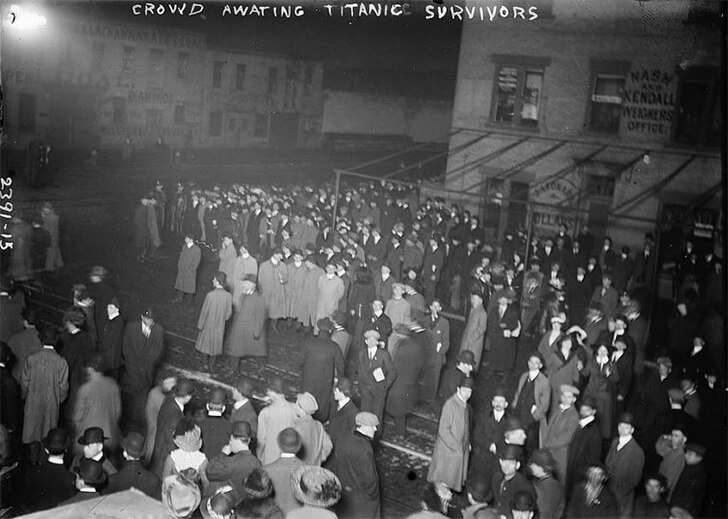
The sinking of the Titanic on April 15, 1912, was a major news story at the time. However, people on land had limited information about the sea disaster until almost three days later when over 700 survivors arrived in New York on the Carpathia. A massive crowd of anxious family members had gathered, but unfortunately, many of them received devastating news.
Pier 54, where the survivors disembarked from the RMS Carpathia, still stands in New York City today. Though it was a site of relief for some, it also held heartbreak as loved ones awaited news of those who did not survive.
Where Titanic's Lifeboats Ended Up
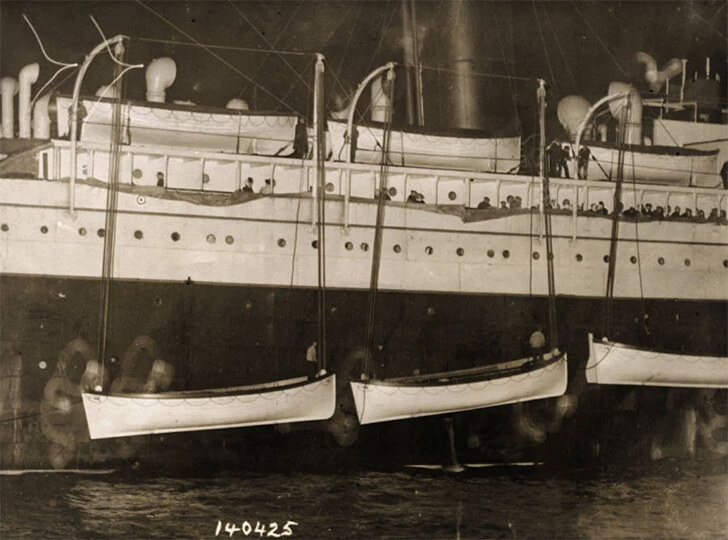
The Carpathia is shown here as it reaches the pier in New York with the Titanic's lifeboats hanging from its side. Thirteen of them were transported by the rescue ship and unloaded at Pier 59, the same berth where the Titanic was supposed to dock. The lifeboat plates containing the name Titanic and the lifeboat numbers were removed by souvenir hunters.
One surviving crew member, Able Seaman Tom Jones, removed the number from boat eight and sent it to Lucy Noël Martha, the Countess of Rothes. The fate of the boats is uncertain, but it is speculated that they might have been used on Titanic's sister ship, the Olympic.
The Story of the Titanic Orphans
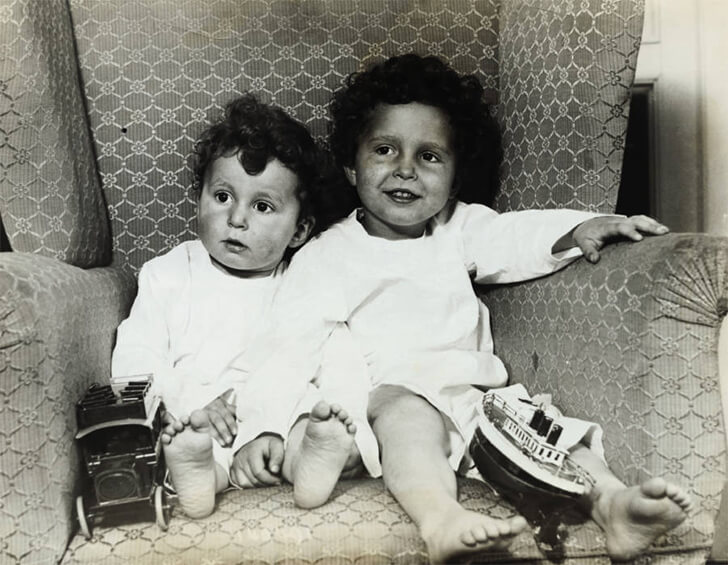
The tragic story of the Navratil family on the Titanic is one of the lesser-known tales of the doomed voyage. Michel Navratil, a Slovakian tailor, abducted his two sons, Michel Jr. and Edmond, and boarded the ship under false names. After the ship hit an iceberg, Navratil dressed his sons and handed them over to be rescued.
Michel Jr. later recounted his father's final words to him, expressing his love for his estranged wife and his hope that they would all live together happily in America. This photo shows the boys arriving in New York, where a kind stranger cared for them before their mother found them.
Homecoming of Titanic Survivors in Southampton

As this picture shows, in Southampton, England, a group of people stood eagerly anticipating the homecoming of those who survived the sinking of the Titanic. Southampton provided over 720 members to the Titanic's crew of 900, with only three of them being female. Unfortunately, only 124 crew members from the city made it back alive.
Numerous churches and graveyards in the city installed plaques and memorials to commemorate the individuals who lost their lives. One memorial erected in April 1913 honored the ship's musicians, but German bombings during World War II destroyed it. A replica has been constructed, available at the intersection of Cumberland Place and London Road.
The Few Men Who Survived
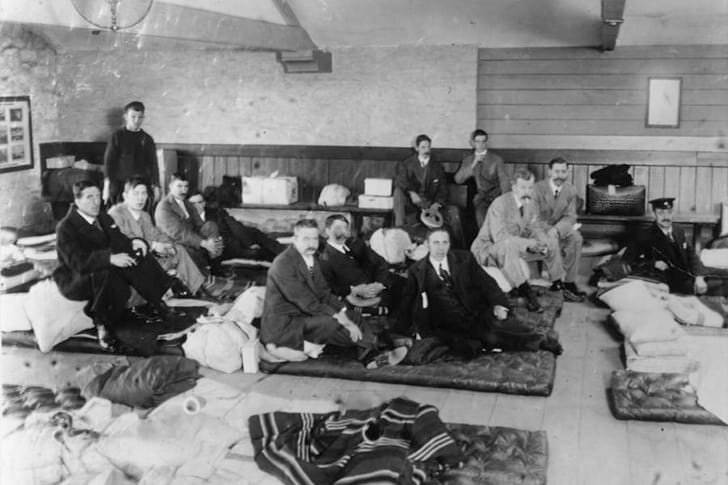
In an intriguing photograph taken at Plymouth's Millbay Docks, a group of male survivors from the Titanic are captured expressing their relief and gratitude for surviving the harrowing ordeal that cost the lives of many of their fellow passengers. The striking image vividly portrays the bravery of those who sacrificed their chance to board lifeboats in favor of women and children.
The sinking of the Titanic profoundly impacted its survivors, with some possibly developing an aversion to future seafaring ventures. Nevertheless, their fortitude and valor remain an inspiration and a testament to the strength of the human spirit, particularly during times of crisis.
Southampton's Community Response to the Tragedy
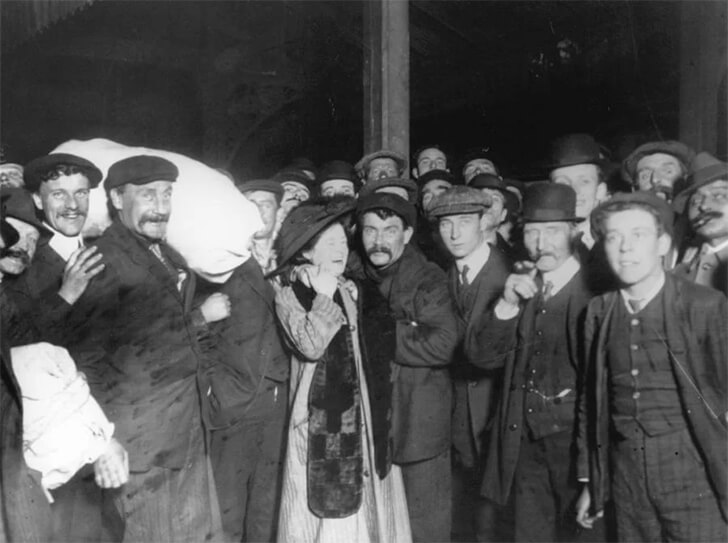
When the Titanic survivors returned to Southampton, the city's people were deeply affected by the tragedy and showed their support in various ways. Many residents welcomed the survivors and offered them assistance and comfort. Some opened their homes to the survivors, providing them with food and shelter.
The community also organized a relief fund initiated by Lieutenant Commander Henry Bowyer, the Mayor of Southampton at the time, to provide financial support to the families of those who had lost their lives. The Mayor initially took on most of the responsibility for distributing the funds, raising a total of £413k ($518k).
The Colossal Propellers of the Titanic
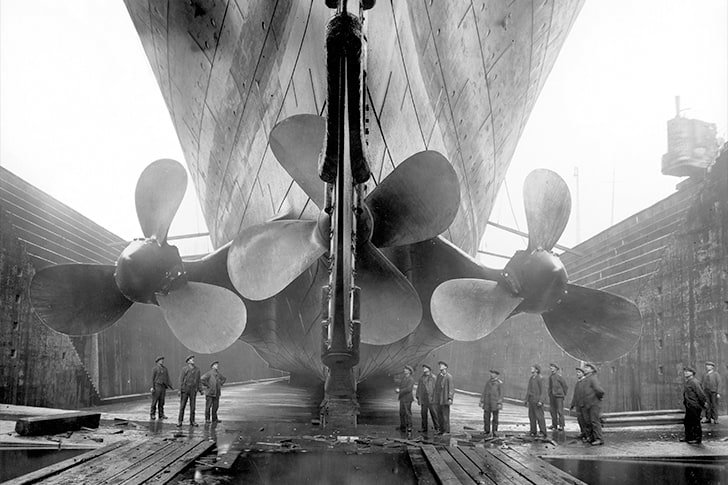
Noteworthy for more than just its impressive length of 882 feet and 9 inches, the RMS Titanic also boasted a remarkable beam of 92 feet and 6 inches, and a towering height of approximately 175 feet, establishing it as an engineering marvel of its era. There has also been a contention that its propellers were the most massive ever constructed.
This image captures the immense propellers, each measuring over 23 feet in diameter and weighing a staggering 38 tons, that propelled the vessel through the water. It's worth noting that contemporary private yachts are significantly smaller than the Titanic, with some even dwarfed by the size of the ship's propellers.
Inside the Luxurious First-Class Bedrooms of the Titanic

The first-class bedroom on the Titanic was a luxurious and elegant space that offered a comfortable and relaxing environment for its wealthy passengers. These staterooms featured high-quality furniture, including a large bed, wardrobe, writing desk, and a small sofa or chairs. The decor was often in keeping with the Art Nouveau style popular at the time, featuring ornate woodwork, intricate carvings, and lavish fabrics.
Each room had its own en-suite bathroom, complete with a bathtub and a flushing toilet—a rarity on ocean liners at the time. While the Titanic was equipped with central heating, every first-class cabin had electric heaters to offer additional warmth to its 324 first-class passengers.
Luxury Parlour Suites of the Titanic
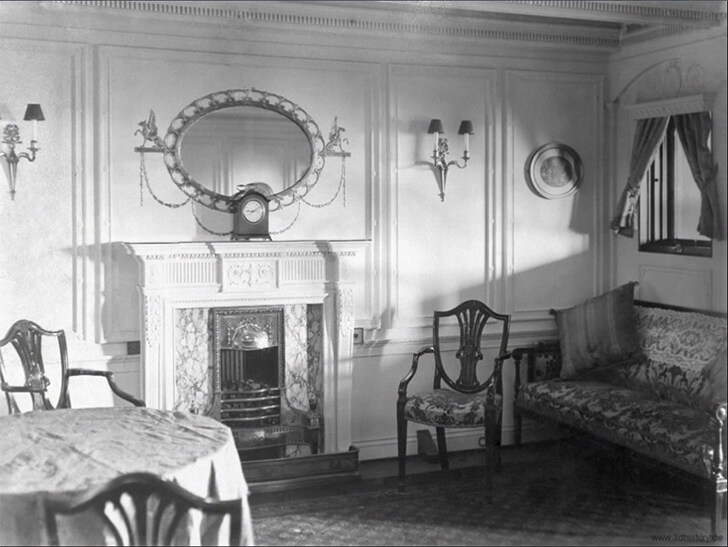
The Titanic is known for its grandeur and luxury, and the Parlour Suites epitomize extravagance. Only four of these opulent suites were available, each boasting private sitting rooms and fireplaces. A ticket to one of these suites cost an astonishing $4.35k, equivalent to $115k in today's currency.
The White Star Line's chairman, J. Bruce Ismay, later branded the coward of the Titanic, occupied the port-side "Deluxe" Suite. In contrast, the starboard suite was occupied by the American millionaire, Mrs. Charlotte Drake Cardeza, her son, and entourage. Each suite had two large bedrooms, two walk-in wardrobes, a private bathroom, a lavatory, and a spacious lounge.
Sleeping Accommodation in Titanic's Second-Class

Titanic's second-class cabins were far from the luxurious accommodations of first class but still offered more than the spartan conditions of Third Class. With bunk beds and shared bathroom facilities, these cabins were equipped with basic furniture, including a sofa, wardrobe, and dressing table with washbasin and mirror. However, due to the rushed completion of the ship, some second-class rooms were cramped, poorly furnished, and lacked proper heating.
Passengers like Imanita Shelley complained, as there were even half-eaten sandwiches left behind by workmen. Despite these issues, many second-class amenities rivaled those of other ships of the time. A room cost around $60, equivalent to roughly $1.7k today.
The Iconic Grand Staircase: Symbol of Luxury on the Titanic
![]()
The Grand Staircase was a lavish masterpiece that served as the centerpiece for first-class passengers aboard the RMS Titanic. Adorned with ornate wood carvings, wrought iron railings, an exquisite clock, and topped with a stunning glass dome, the staircase was a sight to behold. As the most recognizable feature of the ship, it has been frequently depicted in media, solidifying its iconic status.
Even when the wreck was discovered by Robert Ballard in 1985, only a gaping well remained where the staircase had once stood. In films about the Titanic, the Grand Staircase is almost always prominently featured, representing the opulence and grandeur of the ship.
First-class Elevators
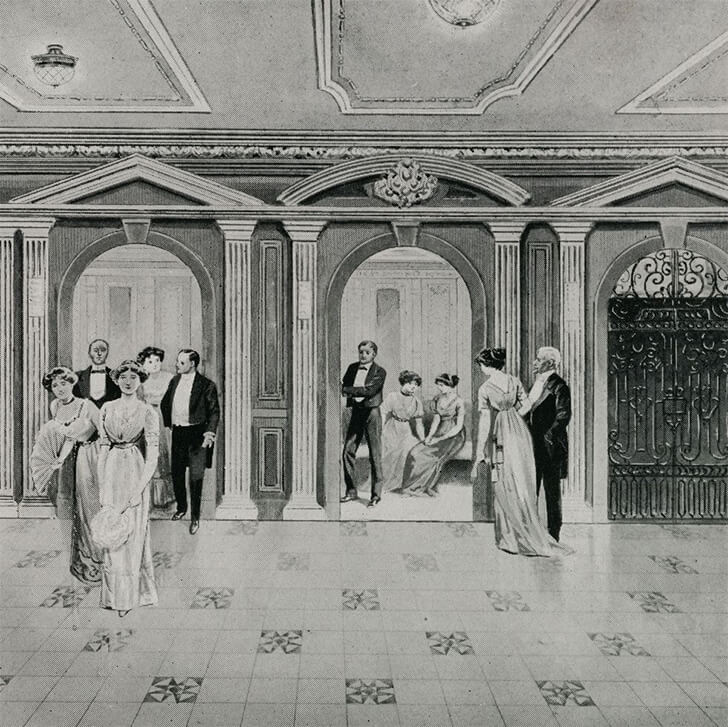
The opulent experience of first-class passengers aboard the Titanic was elevated by three gilded electric elevators, positioned right behind the stunning Grand Staircase, running the length of the stairwell and serving deck A-E. As guests entered through the semi-enclosed entry vestibules on either side of the staircase, they were greeted by the luxurious Reception area.
Marine elevators are uniquely designed to endure harsh ship-board conditions such as adverse weather, humidity, rolling, and pitching. However, there have been unfortunate incidents involving elevators on ships in the past, which have prompted authorities to enforce more rigorous regulations for their efficient operation and maintenance.
The Extravagant First-Class Smoking Room
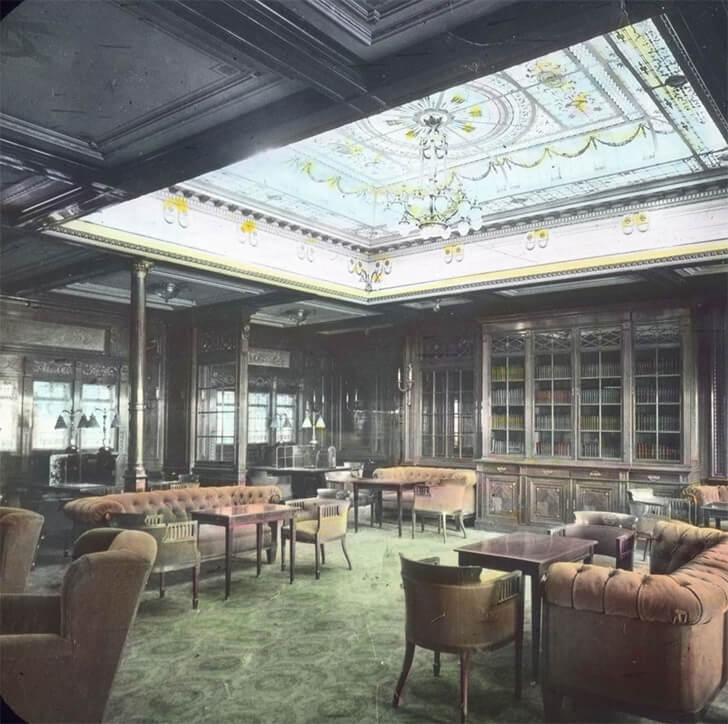
One of the most exclusive spaces on the Titanic was the first-class Smoking Room, a luxurious Georgian-style lounge exclusively for male passengers. Decorated with dark mahogany paneling inlaid with mother-of-pearl and richly carved, the room boasted large stained-glass windows. It was designed to recreate the ambiance of a gentlemen's club.
The Smoking Room was a place for first-class men to relax, smoke, drink, socialize, and even play games of chance—except on Sundays. Unfortunately, the room was destroyed during the sinking, and no pictures of it on the Titanic exist. However, certain artifacts from the room have been recovered from the debris field, including two of the gilt-bronze chandeliers.
Escape to the Veranda Café
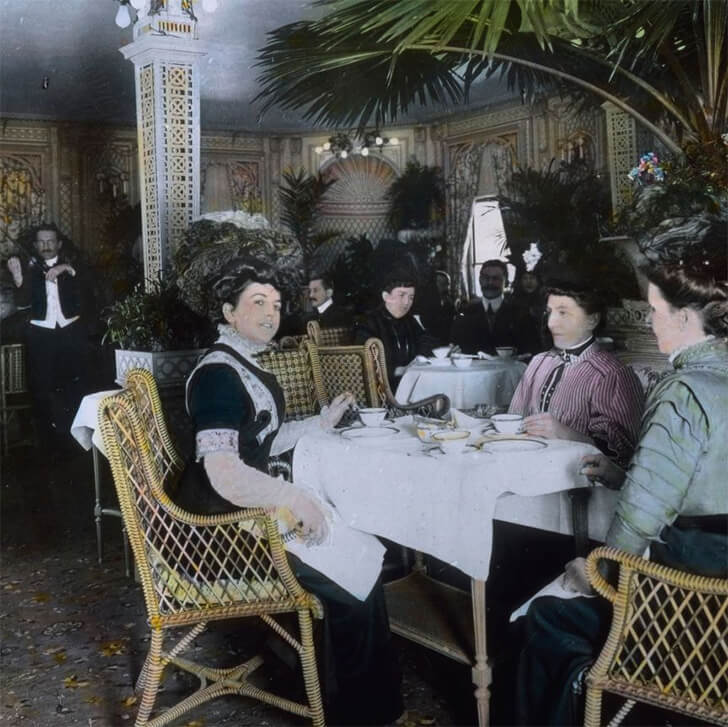
First-class passengers seeking a tropical escape could visit the Veranda Café, an elegant eatery adorned with imported palm trees. The café was split into two rooms on either side of the ship's aft, featuring white wicker furniture and green trellises with climbing plants. The red and brown cushioned chairs added a touch of luxury.
Modeled after the gazebos of large English country houses, the Verandah Café offered a picturesque setting for passengers to enjoy their meals. Although the Titanic's Verandah Café was destroyed during the sinking, a bronze grille fragment from its window was discovered and is now on display in various exhibitions.
Third Class Dining Saloon on the Titanic
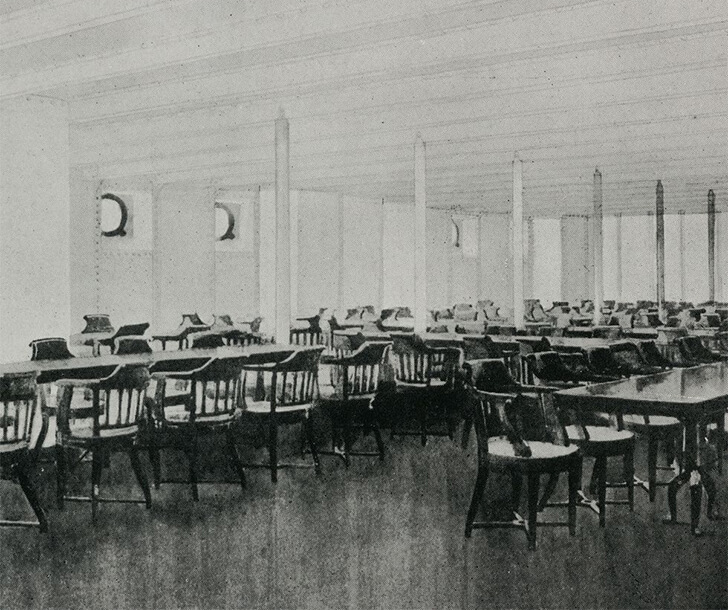
The Third Class Dining Saloon was a simple but functional area on F-deck. It was divided into two sections and could seat up to 400 people at long tables that accommodated 22 each. The room lacked decorations and had sidelights that provided brightness. The walls were painted in enameled white and adorned with posters advertising other White Star ships.
The seating arrangement was separated, with families and single women occupying the forward section and single men in the aft. Despite its less-than-luxurious appeal, the dining experience was satisfactory, and passengers enjoyed fresh bread and fruit at every meal. Unfortunately, during the sinking, the dining room was heavily damaged.
The Titanic's Gymnasium

The Titanic's Gymnasium, located on the boat deck, was a state-of-the-art exercise facility for first-class passengers. The oak-paneled room was equipped with modern workout machines, including electric camels, a rowing machine, and mechanical bicycles. Priced at one shilling, tickets granted other passengers access to one session, assisted by a physical educator.
The gymnasium was segregated by gender and age during different hours of the day. It was a popular attraction, providing both beneficial exercise and amusement for the passengers. Unfortunately, during the sinking, it became a place of panicked passengers waiting to board lifeboats, and the trainer, T.W. McCawley, never left his station, ultimately going down with the ship.
Luxury Swimming Pool for First-Class Passengers

The Titanic boasted many luxurious amenities for its first-class passengers, including the second-ever heated swimming pool aboard a ship after its sister vessel, the Olympic. The pool was located on F deck and was exclusively available for first-class passengers, as were the other amenities like Turkish baths and squash courts.
Passengers had to purchase tickets from the inquiry office to use the pool, segregated by gender during specific hours. Women could take a dip from 10 a.m. to 1 p.m., and men from 2 p.m. to 6 p.m. Unfortunately, the condition of the amenity remains unknown, as a watertight door on the wreck seals it off.





